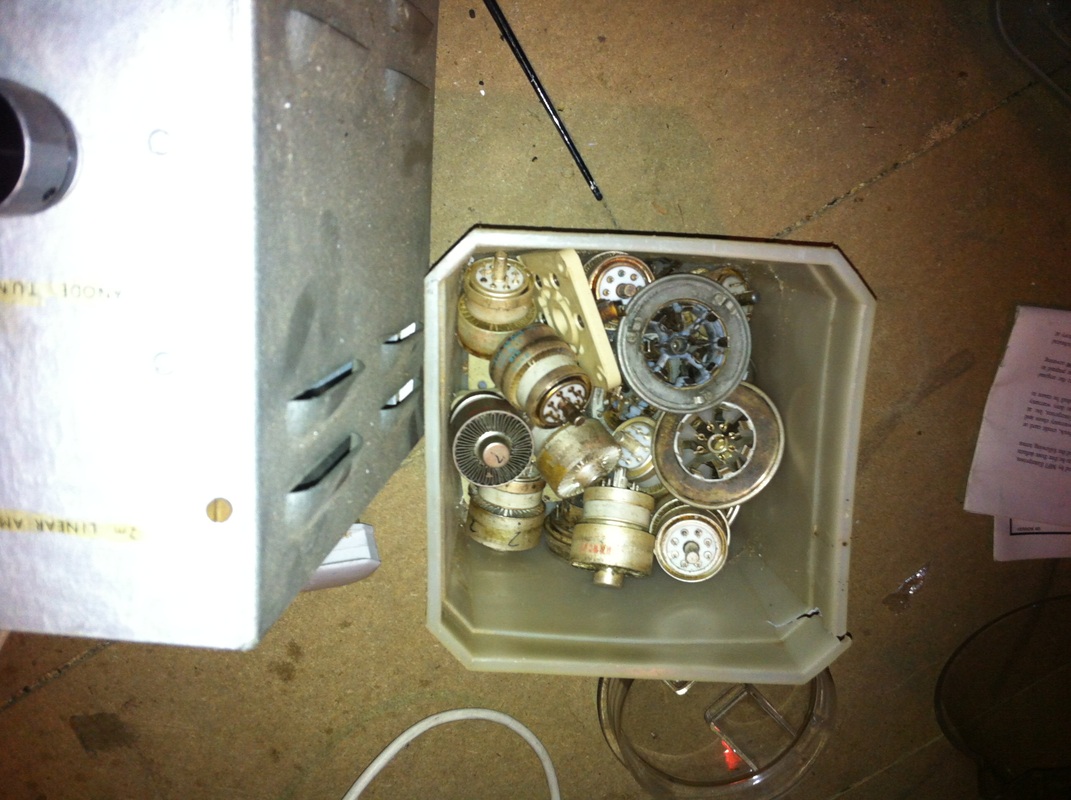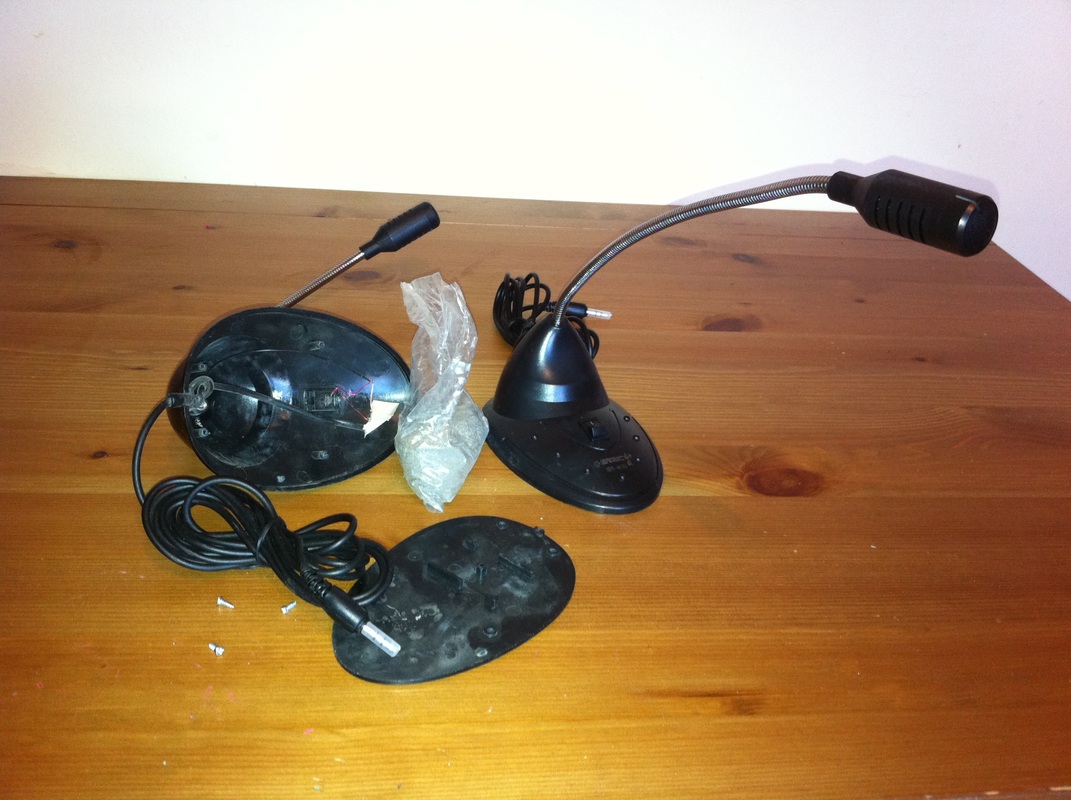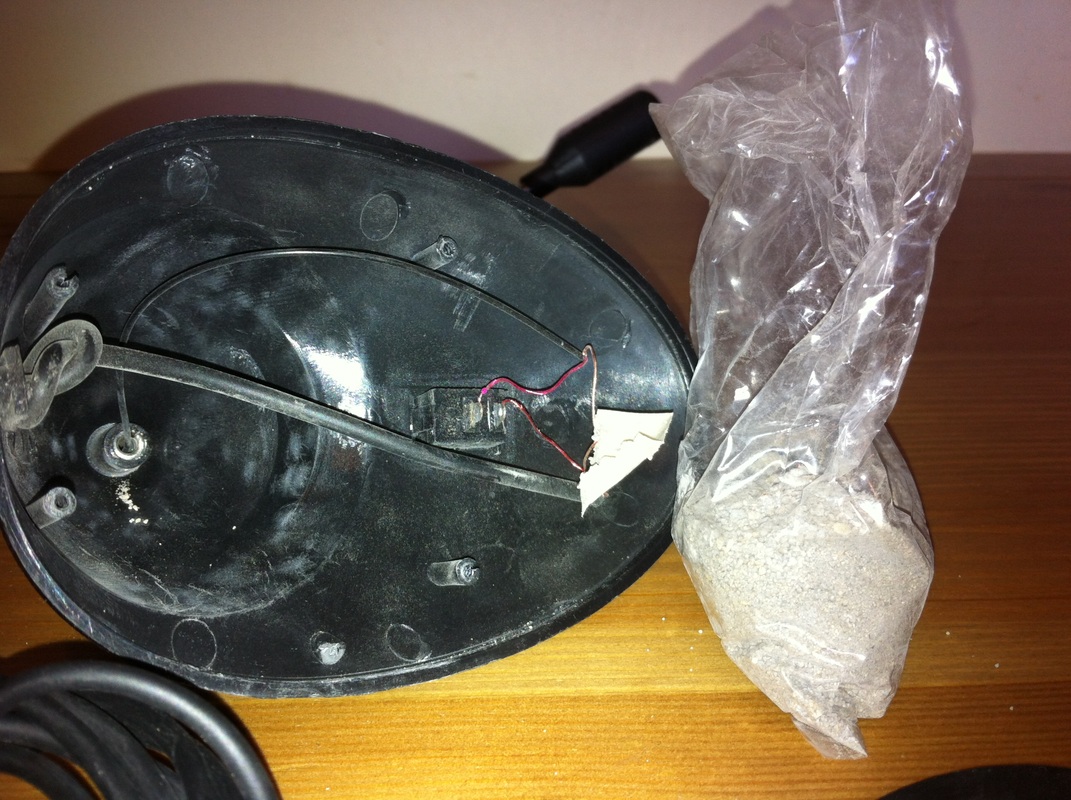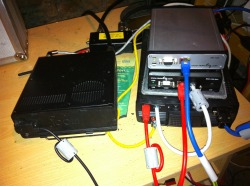|
I am sorting out my gear and have two old amplifiers available free to a good home, provided you collect from north London. Both are for 144MHz and are for single 4CX250s. There are two sets of PSU parts, a changeover relay and one blower. One was given to me by a club mate, so is of amateur construction. The other I bought for parts at a rally years ago and is nicely made in a blue case. I was told it was made as a project by apprentices at Marconi, but have no way to verify that. If anyone needs a used valve or two for the project I can raid my box - but you can't have them all. Please contact me by email to arrange collection from North London. Here are some pictures taken in my loft (where the amps have been for almost 6 years - hence the dust!) using my iphone, so excuse the poor picture quality:
0 Comments
I have tried a number of multiband wire antennas at GB2GP over the last year and have never been really happy with the results. The current antenna is a 1/3 2/3 split OCF dipole, which seems to work but still causes me a few problems. The main issue is that there is huge BCB breakthrough from Brookmans Park which is in LOS, so I am using a high pass filter at the transceiver to reduce this to a reasonable level. The filter is designed for 50 ohm impedance and the OCF is no where near that on all bands and even though the radio ATU can tune out any mismatch we toasted one of the filter torroids during JOTA due to the mismatch. The answer seems to be to use a resonant antenna for each band of interest. One of my neighbors, G0RPM, has had good results with a parallel dipole made by Alpha Delta. I called the UK importer Martin Lynch to enquire about these and was told by an unhelpful person they were out of stock and didn’t know when they would get any more in. As a result I have decided to stop being lazy and build one! The plan is to have an antenna for the 80-10m contest bands. This means four dipoles, 80m, 40m (which also works on 15m), 20m and 10m which I measured out in my hall from wire I had knocking about in my store. The next job was to build some spacers for the elements. A search on google suggests the spacing should be wide as possible to make tuning easier. I have a miniVNA which should simplify tuning so I decided to use only 75mm between wires. I picked up a length of PVC pipe from my local hardware shop cut it into pieces then 3mm drilled holes in my workshop (aka the kitchen). Feeding the wires through the holes was a simple job, but securing the spacers was more difficult. I tried hot melt glue, which was partially successful, but ended up using cable ties to produce my ladder effect. I had a spare commercial 1:1 balun which I put at the feed point and the antenna is ready to go in the air. Hopefully, installation will be an easy job, but I hope that I don‘t get too cold trying to tune the thing as the temperature here is not predicted to rise above freezing for a few days.
I usually use either a fist microphone or a headset when on the air, but my recent experiences at GB2GP have shown me that a desk microphone is useful when operating a special event station as it is easier for visitors to use on the air. GB2GP has two radios that don’t have microphones at the moment so I looked into building a couple of electret gooseneck desk mics from the ARRL handbook. Once I had costed up some parts that weren’t in my junk box this project felt too expensive until I saw PC desk mics on ebay for only £2 each. At that price I bought a couple and they arrived this morning. The external quality looked just fine - so far so good Like any good radio amateur, the first thing I did was take one apart to see how I could add a PTT. As expected the quality inside was only worth £2, but the thing that really surprised me was the bag of grit that had been inserted to add weight to the base! I guess it works, so why not stick with it, but I will be sealing the bag as I spilt half the contents on the floor when I tried to take it out of the microphone!
Next job is to change the flex to some 4 core and add an 8 pin microphone so they can be used with the TS-711 and TS-690S at GB2GP which shouldn’t take long. At a loss I haven’t blogged for a while – mainly because I have been too busy building stuff to write anything down. The main focus of my activity has been rebuilding kit to install at Gilwell Park, the Scouts Association’s HQ which holds the special call sign GB2GP. I will write about antennas another day, but I have been rather stumped by some recent measurements I have made on co-ax runs. The main coax runs at GB2GP will be Andrew Heliax LDF5-50 which is great news. 5-50 is a rigid cable so you have to use a loop of flexible cable around the rotator and other joints. As a result I bought some Ecoflex 10 from Terry at Diode Communications to do that job. It isn’t cheap, but has a good price:loss ratio! Terry did a great job in rushing the cable to me in bad weather at his end and I made up three lengths to go from the antenna feed point, down the boom (where required), round the rotator and then to the main 5-50 run. These lengths were 13m, 11m and 2m. The antennas are being fitted on a commercial tower by professional riggers so I wanted to make sure the cable assemblies were perfect as there is no second chance to fix mistakes. Using mini db calculator I estimated the losses on the highest frequency that it would be used on and compared them to the losses measured using both my mini VNA and calculated from power read using a Bird 43 wattmeter. The table below shows the losses for each bit of cable (db) and one major issue:
0.86db loss from a 3m length of cable! Shocking! This was the only cable that used a PL259,so I immediately suspected this to be the problem. I called Henry Westlake and ordered some pressure fit PL259s to ensure that the braid was properly installed, but this made no difference at all. I then wondered if the co-ax itself was not to spec and tested all of the runs on 432MHz as this could highlight any problems:
I am prepared to accept 0.2db variations from spec I had to use some inter series adapters and I am not using calibrated measurement gear, but it looks like I have a problem with that short run. If the PL259 is good, then the N-type at the other end must be the problem! What else can it be? I am at a loss…..
MB7UBP has been off air for a while because my internet connection failed at home. I spent a short while tracing the problem and it seems that cable connecting the modem/router to the phone had become intermittent so moving the router closer to the phone point got me back on ADSL. However, it also moved the router away from my Ethernet link into my loft shack. Good for surfing, bad for radio. I have been thinking about re-engineering the network for a while for a number of reasons, so this failure provided some impetus to get on with it. The new plan is to use a wifi bridge instead of the (RF prone) Ethernet cable. There are several plug and play bridges out there aimed at gamers, but these do not support multiple devices (i.e .include a router) at the end of the bridge. I decided to “roll my own” bridge using a Linksys WRT-54G TM re-flashed with DD-WRT. DD-WRT has a really nice GUI and I have tried it before with various bits of embedded APRS software, but have never had much luck. It seems that the GUI uses so much RAM that the APRS software wouldn’t run. My experience this time was very different, the flashing was seamless, the set up as a bridge went exactly as per the wiki instructions and within 30 minutes I could turn off the wireless in my laptop and access the web via the bridge instead. All I have to do now is install the bridge in my loft shack I should be back in business!
New toy alert! I have recently picked up an elecraft band decoder to use with my remote station. Elecraft got the kit over to me quickly and it is now assembled and ready to go. This bit of kit means that I can use the TS-480 to switch antennas at my eventual remote QTH. Icom and Yaesu radios are better at handling the band outputs than Kenwoods so the options for the 480 are quite limited but the guys on the TS-480 yahoo group say this one works a treat. I'll give it a go and see....
Back at home I have been using my remote rig set up with my Ft-847 for VHF+ work. Whilst is has done everything I expected of it, not having a real tuning knob at the operator end is a major drawback – it just isn’t any fun tuning with a computer interface. Whilst thinking about solutions I saw a reasonably priced Icom IC-706G for sale. I appreciate the radio doesn’t have cutting edge performance, but it is not much worse than the FT-847 . As a result I took the plunge and I have spent some time setting it up with my RRC v1 boxes. The picture below shows my two RRC boxes in the loft “shack” attached to my TS-480 for HF (right) and IC-706G (left). There have been some RF feedback problems, so I have had to attach large amounts of ferrite to sort this out! The box at the back is a Cross Country Wireless duplexer to split the VHF/UHF port to the respective amplifiers The photo below shows the operator end, on the kitchen table. It was all working very nicely too. Note the child lock on the cupboard behind the table. My son is now 14 months old and rummaging through everything he can find. He is the reason that my office/shack was turned into a nursery and the RRC adventure started!
I have recently been asked to take a look at a non working linear amplifier for 2m – a Tokyo Sagra 600. Being an optimist I spent quite some time on the web hoping to find a circuit diagram, but had no luck. It transpires that the amplifier’s owner did have a copy of the original manual he has finally passed this over to me. I haven’t found the fault with the amp yet – it looks like it is in the control board which is in one of the least accessible places of the whole beast but in the meantime I have scanned the manual and posted it here in case anyone else is looking for it online the future.
I have been given a Kathrein amplifier that has just come out of commercial service on 71MHz. It is in a 19 inch rack mount panel, runs on 28V, contains a pair of isolators (with DLs) and is rated at 100W according to the panels. I haven't started to take it apart yet, but wonder if anyone has any info that can help me get started.
I have posted a few pics below if that helps.... We are entering the main sporadic E season and until yesterday I was not able to get on one of my favourite bands, 50MHz, as I didn’t have an antenna in the air. The dual band 6/4m yagi plans are still ongoing so I decided that a dipole stapled to the inside of the loft rafters as an inverted V would at least give me some presence on the band. 10 minutes with the soldering iron and I had a dipole ready to go, a further 5 minutes after that it was up and ready for tuning.
I was really surprised at the effect the rafters had on the dipole. My miniVNA made light work of tuning, which was a good job as my original dipole (standard length plus 6 inches to be safe) was resonant on 38MHz! A few snips and careful rearrangement of the legs next to the roof gives an SWR of 1.3:1 on 50.150MHz, so that will do me nicely. Tuning around the band last night gave me QSOs on cw with S53A and T77C. I also heard a few Italians on SSB, but have audio problems which stops me from transmitting at the moment. |
AuthorA few notes on recent radio activity by Steve, M0BPQ. Archives
December 2020
Categories
All
|
||||||||||||||||||||||||||||||||||||||||||

















 RSS Feed
RSS Feed
